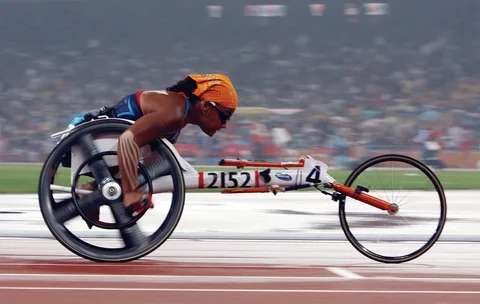A Glimpse Behind the £6.3 Million Rebranding
In 2024, Mayor Sadiq Khan unveiled a bold rebranding of the London Overground network, introducing six distinct line names: Liberty, Lioness, Mildmay, Suffragette, Weaver, and Windrush. The goal? To simplify navigation and create a more culturally inclusive transport experience. But what many didn’t see was the exhaustive, and expensive, process behind the final selection—a process that included a wide array of imaginative, symbolic, and historic names that never made the cut.
Now, thanks to a Freedom of Information request filed by London Centric, we have access to a fascinating longlist of 27 proposed names that reached the scoping phase, along with another 51 that were considered but didn’t progress.
How the Naming Process Unfolded
The commitment to rename the Overground’s six lines was made in Mayor Khan’s 2021 re-election manifesto, reflecting how much the network had expanded. An independent engagement process followed, tapping into community input, historical insights, and London’s cultural diversity. The process cost a total of £6.3 million.
By February 2024, the final six names were announced. However, the public only learned the full list of rejected names much later. TfL’s internal documentation included descriptions and rationales for each suggestion, highlighting geographical links, cultural significance, and social representation.
Why Certain Names Were Rejected
TfL said names were eliminated for several reasons:
- Preference for names honoring groups rather than individuals.
- Concerns over clarity in announcements.
- Potential for misinterpretation or offensive abbreviation.
- Risk of overlap with safety-critical language.
The 27 Rejected Names That Made the Longlist
Names Celebrating Culture, Nature, and Social Movements
- Sunflower Line: A nod to the hidden disabilities sunflower symbol, representing autism and neurodiversity.
- Willow Line: Inspired by the willow trees along the River Lea, representing conservation and furniture-making traditions.
- Skylark Line: This cheerful bird thrives in suburban green belts, echoing the Overground’s circular path.
- Fanns Line: Named after the ecological Land of the Fanns project protecting the Thames Estuary.
- Ripple Line: Linked to London’s waterways and wetland areas, from Hampstead Ponds to Barking.
- Saffron Line: A reference to Croydon’s name origin and its historical link to the cultivation of saffron.
Honoring Historical and Social Justice Figures
- Jayaben Line: Commemorates Jayaben Desai, leader of the 1976 Grunwick strikes for workers’ rights.
- Garrud Line: Edith Garrud, Britain’s first female jujitsu instructor and suffragette bodyguard.
- Huggett Line: Annie Huggett, a Barking-based working-class suffragist who lived to 103.
- Winton Line: Sir Nicholas Winton, savior of 669 Jewish children in the Kindertransport mission.
- Derham Line: Scientist-cleric William Derham, rector in Upminster and early physics pioneer.
- Kaushal Line: Dr. Baldev Kaushal, who helped during the 1943 Bethnal Green Tube disaster.
Representing Arts, Language, and LGBTQ+ Heritage
- Polari Line: A coded language once used by gay men to avoid persecution; rooted in London’s theatre and market culture.
- Keskidee Line: Named after the first Black arts centre in Britain, located near Caledonian Road.
- Green Carnation Line: A Victorian symbol of gay identity, popularised by Oscar Wilde.
- Sisterwrite Line: Britain’s first feminist bookshop and a hub for lesbian literature.
- Moonshot Line: A Black community centre in New Cross, established after a racist arson attack.
- Obaala Line: Named for a South Tottenham gallery celebrating Black artistry.
- Lovers Rock Line: A romantic subgenre of reggae music created in London by Caribbean artists.
Celebrating Migration and Working-Class Life
- Malins Line: The first recorded fish and chip shop in London, a symbol of migration and cuisine.
- Cother Line: Jack Cother, the UK’s first Asian professional footballer, recognised by Watford FC.
- Galtymore Line: An Irish dance hall near Willesden Green that became a cultural haven for decades.
- Althea Line: Althea McNish, a Trinidadian-born textile designer known for vibrant botanical prints.
Other Unique and Geographically Linked Names
- Hops Line: Celebrates botanical pioneer William Coys and early beer brewing culture.
- Cable Street Line: A tribute to the 1936 anti-fascist uprising in East London.
- Paralympic Line: Commemorates Stoke Mandeville’s historic 1948 games and the 2012 London Paralympics.
- Rom Line: Refers to both the town of Romford and its iconic Grade-II listed skatepark.
The 51 Names That Didn’t Reach the Scoping Phase
Although less detailed, another 51 names were disclosed that didn’t make it to the longlist. These include:
Alms, Anionwu, Appleton, April, Baldock, Banba, Beacon, Beam, Bower, Bridgetower, Chartist, Chronometer, Coleridge, Colossus, Constantine, Desai, Disco, Eakes, Fairkytes, Garden, Grunwick, Harlequin, Havering, Hilltop, Ingrebourne, Lisicki, Lovett, Maroons, Marson, Matchgirls, Maughan, Maurice, Nebulae, Odeje, Pell, Pendulum, Phoenix, Pilot, Ponds, Push and Pull, Ring, Rominster, Ruby, Seacole, Sound, Tagore, Tipping, Tull, Wilde, Willowbrook, Windmill.
Some of these names reference local boroughs (e.g. Havering), historic individuals (e.g. Seacole, Tull), natural features (e.g. Ponds, Garden), and cultural themes (e.g. Disco, Matchgirls).
The Final Decision
According to London Centric, Mayor Khan was initially presented with a shortlist of six names. He approved three, but requested alternatives for the others. TfL hasn’t disclosed which names he rejected.
Ultimately, the chosen names—Liberty, Lioness, Mildmay, Suffragette, Weaver, and Windrush—were selected to reflect London’s heritage, culture, and communities. But the longlist and beyond reveal just how rich and thoughtful the naming process truly was.
Conclusion: More Than Just Names
What might seem like a cosmetic branding exercise was actually a layered and complex project to reflect the diversity, history, and geography of London. The rejected names—many rooted in activism, migration, nature, and creativity—show a serious effort to honour overlooked stories and people.
Whether you’re riding the Liberty Line or reading about the line that could have been, one thing’s clear: London’s transport system tells the story of its people, even when it’s not plastered on the side of a train.
- Natural Lip Filler – Elegant Lip Enhancement & Subtle Lip Augmentation - December 19, 2025
- Lip Augmentation in London – Lip Filler London & Natural Lip Enhancement - December 16, 2025
- Bonnie Blue secretly filming huge C4 show which will reveal ‘what her life’s really like’ after 1,000 men sex stunt - June 5, 2025






